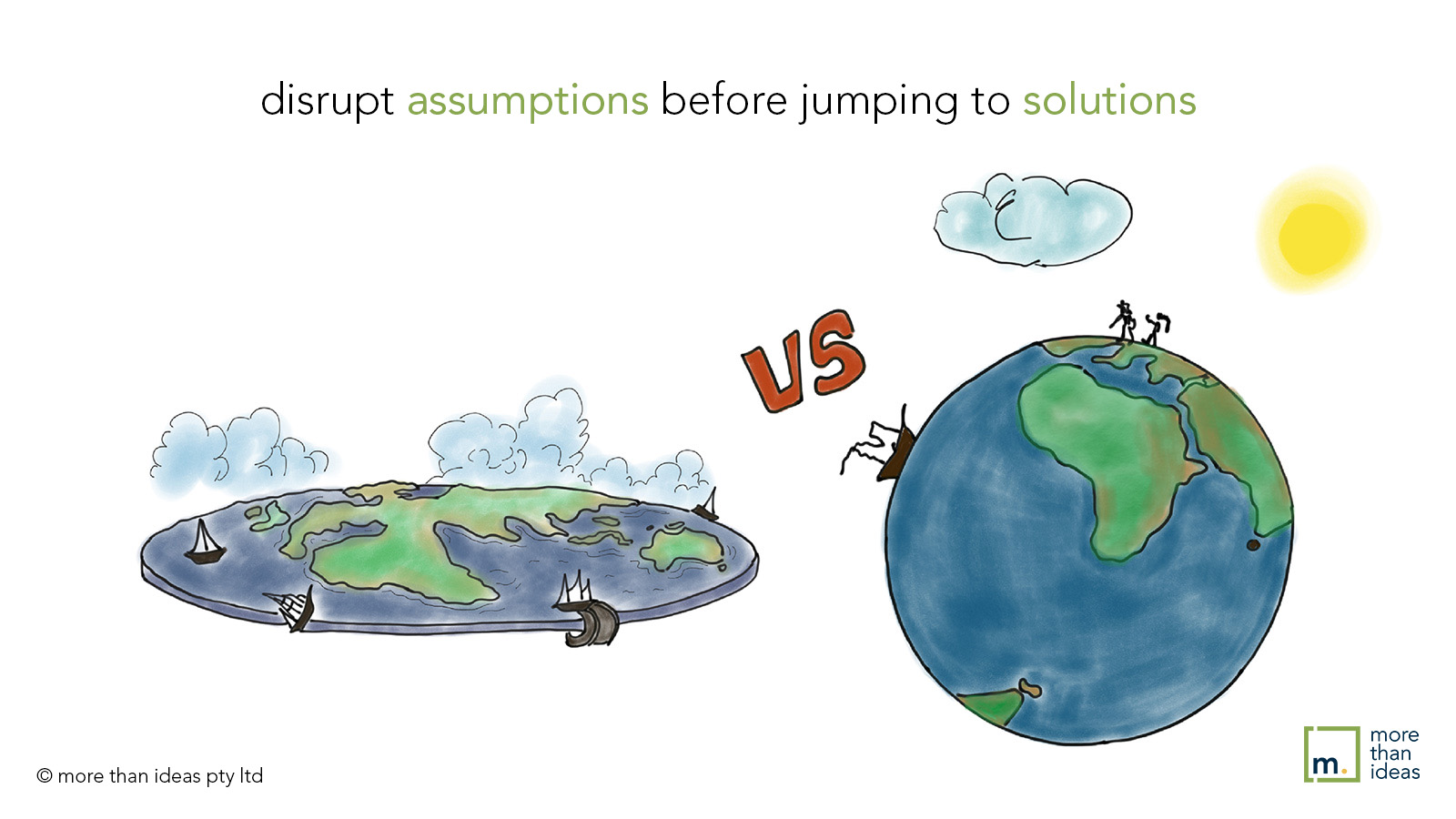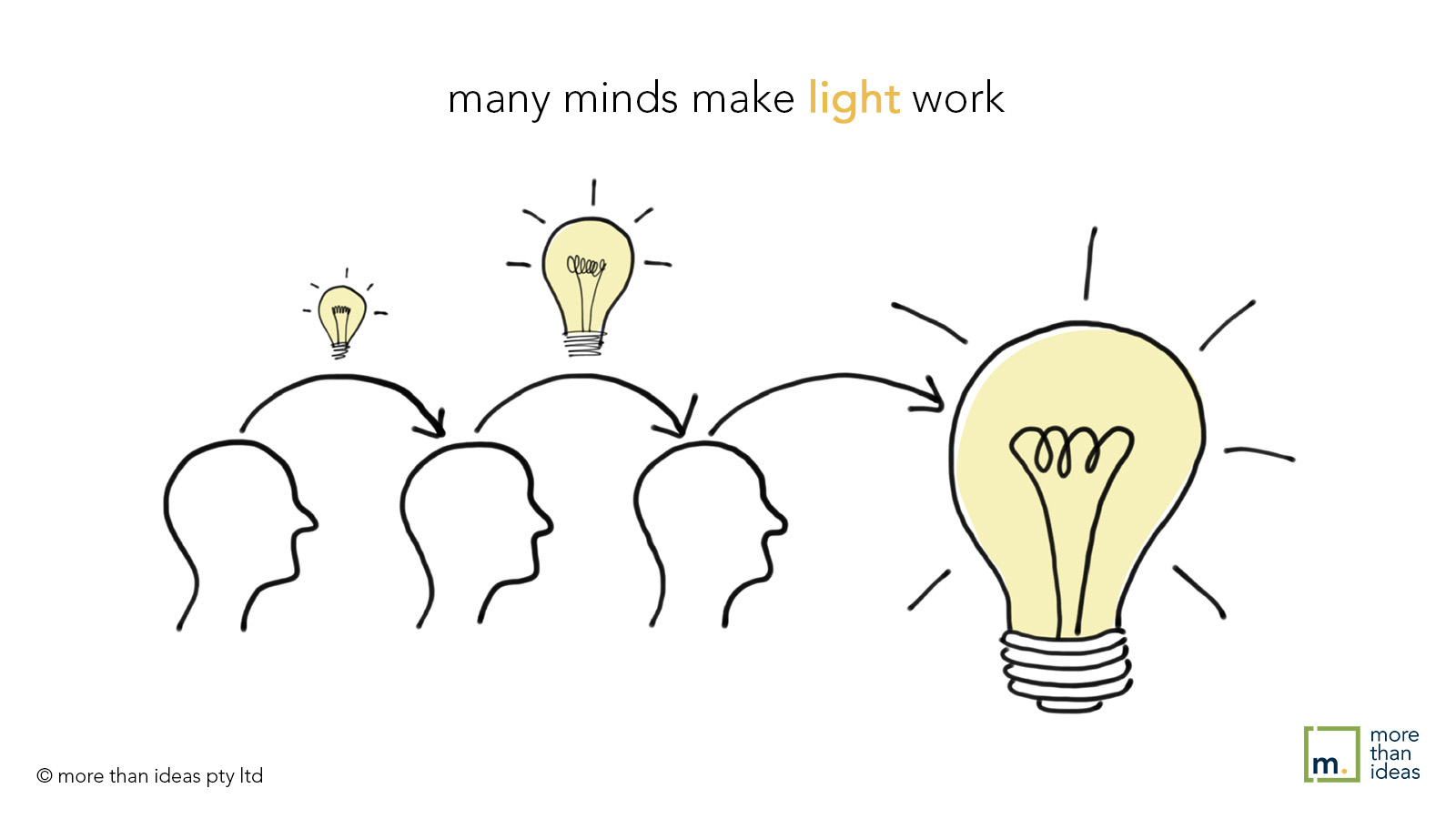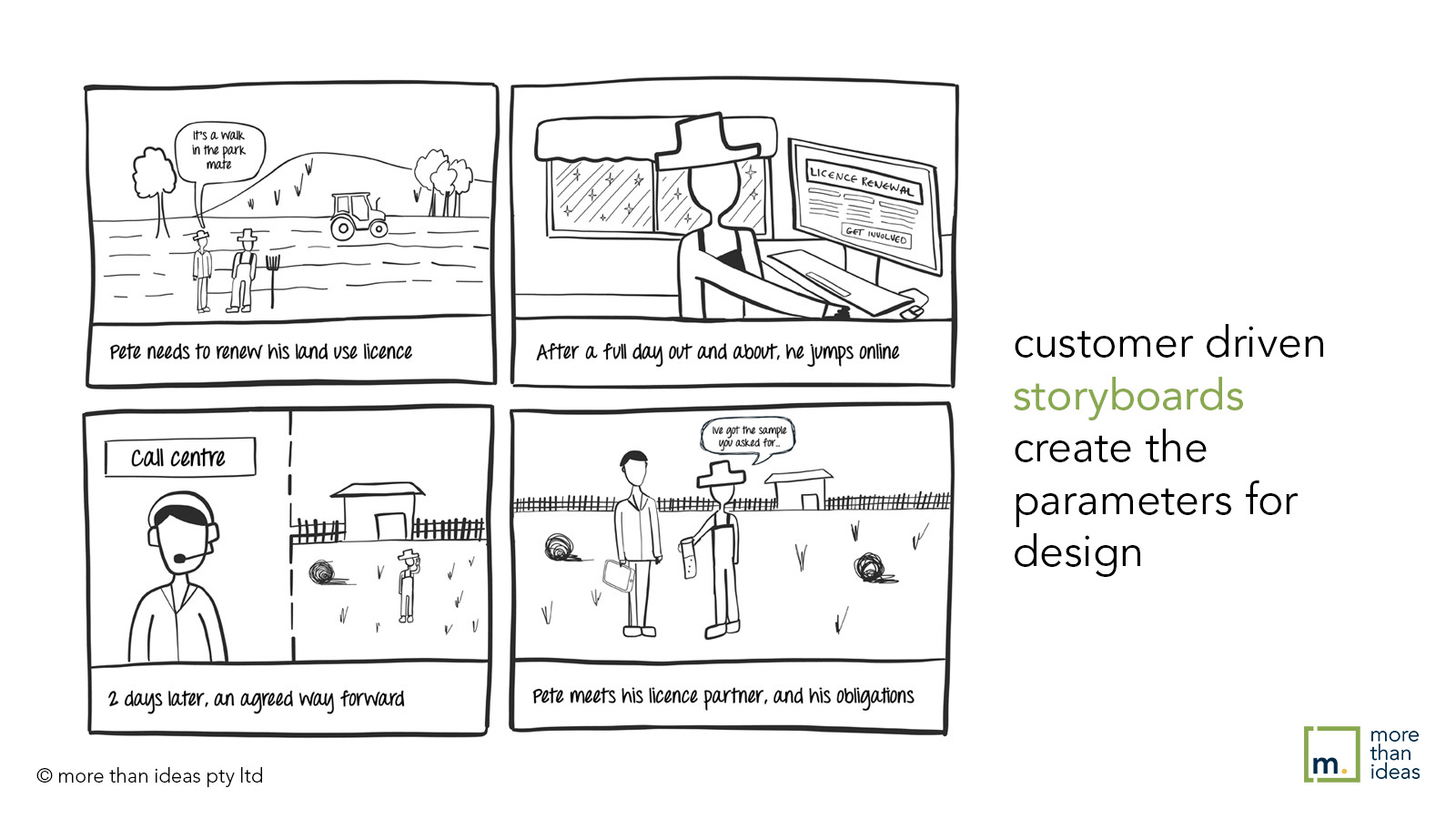design services
A proven pathway to effect positive change
what is design thinking?
Design thinking is a process that encourages genuine involvement of the people that matter to the outcome in framing, exploring and solving identified challenges. It encourages safe mistake making (to strengthen design) and acknowledges that we learn through application. That is, we get to the best solution by not just thinking about it, but trying it out. At its heart is a controlled repeat process of convergence and divergence. Each design cycle moves from convergence (picking a premise or key question), to divergence (exploring, reframing and analysing options), back to convergence (selecting the basis for the next step).
our approach
We know that diverse perspectives deliver better designs. That’s why we always look at a design challenge at three levels – the individual (traditional human centred design), the organisation and the system (often known as systems thinking). So before you start we’ve ensured you are challenging the assumptions and boundaries of your design challenge. Remember – impactful design emerges from the healthy contest of ideas.
the individual
Direct engagement with people provides an important counter point to data and desktop thinking.
We draw strongly on the principles of human-centred design because in our experience it is in individual stories that you find the meaning and relevance behind the data. This is where that magic differentiator lies.
From early research techniques like immersion through to constructive dissent, we give life to individual experiences and voices so you don’t lose sight of the people at the centre of your design.
the organisation
Organisations impact and effect the viability and feasibility of any concept.
The history, resources, beliefs, and systems of an organisation will shape how staff, customers and decision makers act.
When planning for a new opportunity, or responding to an existing challenge, the organisational context is a critical factor.
We draw on observation and proven consulting techniques to get a handle on the organisational context right from the start.
This means we can help you manage your risk, from brand and investment, right through to implementing change.
the system
As powerful as human centred design can be, it cannot account for system dynamics.
When solving in complex environments it is essential that the process of design operates at all three levels.
Factors such as relationships, geography, legislative settings, and socio-political context are critical considerations that must be identified and addressed when developing new concepts.
It is as often at the system levels that competing values and perspectives become very clear.
We use our deep experience in systems thinking and design to ensure the full context is understood and accounted for.
more on design services
-
You’ll often hear design thinkers talk about the importance of identifying biases, assumptions and blindspots. The problem is if we unconsciously define these into the problem definition we hobble ourselves before we get started. A great technique to do this is assumption dumping. Get a group of people in the room that are likely to […]
-
Meetings may be energy sucking resource draining blights on a organisation but well crafted collaboration can be incredibly efficient and effective. We often hear clients baulk when we talk about collaborative design or problem solving. They express concerns that it will be costly, lengthy and resource intensive and worst of all won’t deliver a result. […]
-
Narrative helps us order information. It gives a framework within which we make choices about what we do and don’t do.A good storyboard is a great way to get people on one page and working towards an agreed outcome. Whether it is a team of designers tasked with solving a policy or service challenge, or […]


